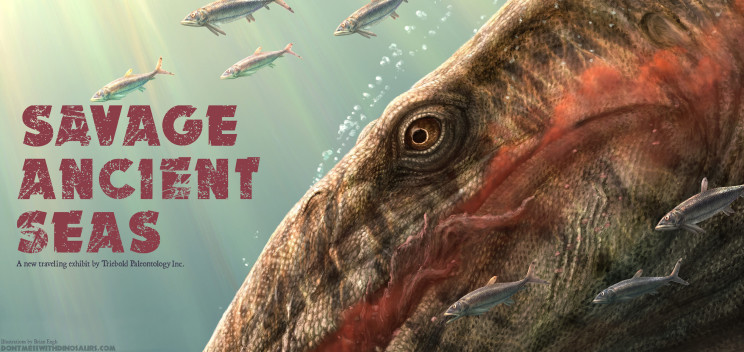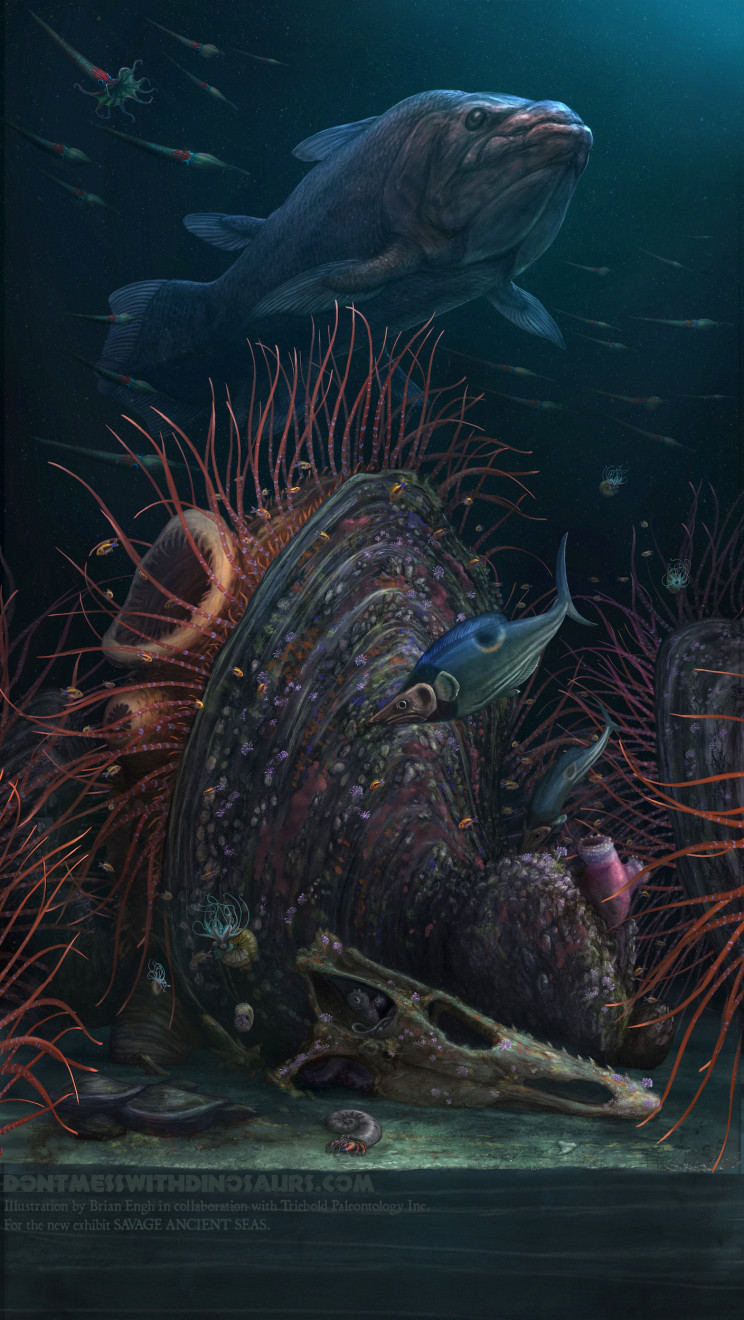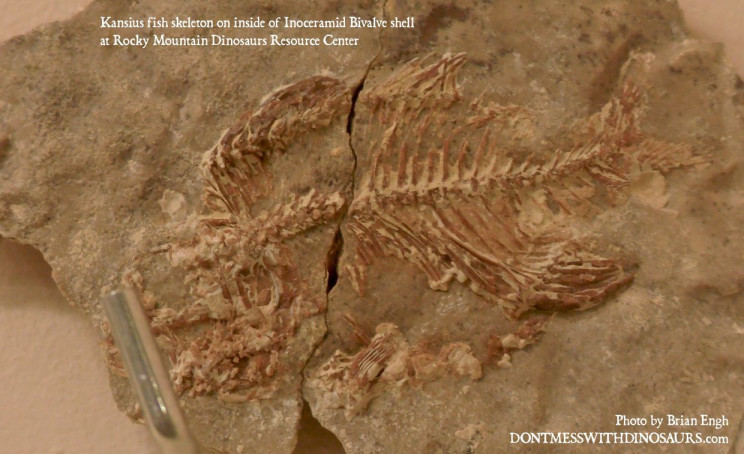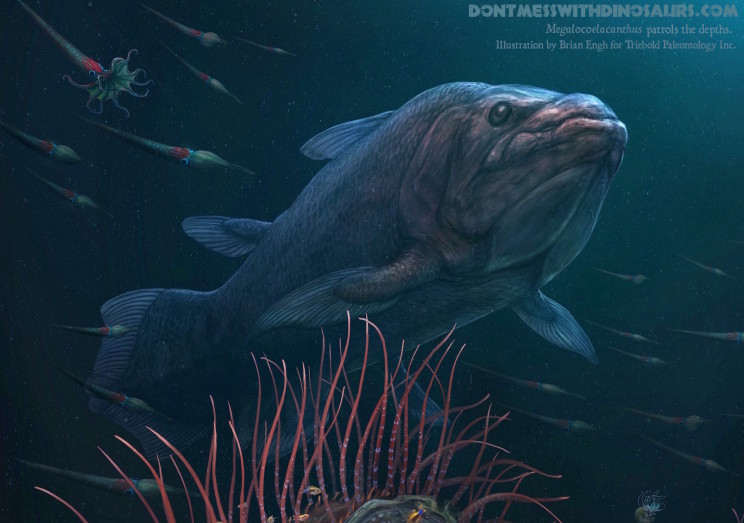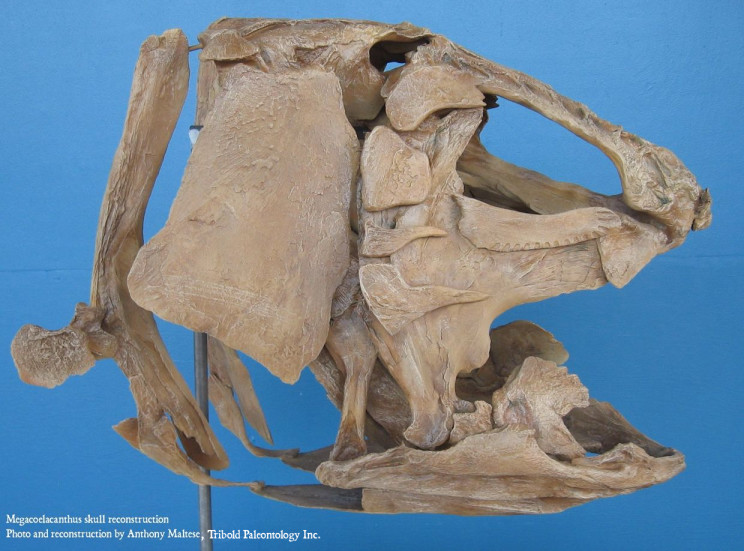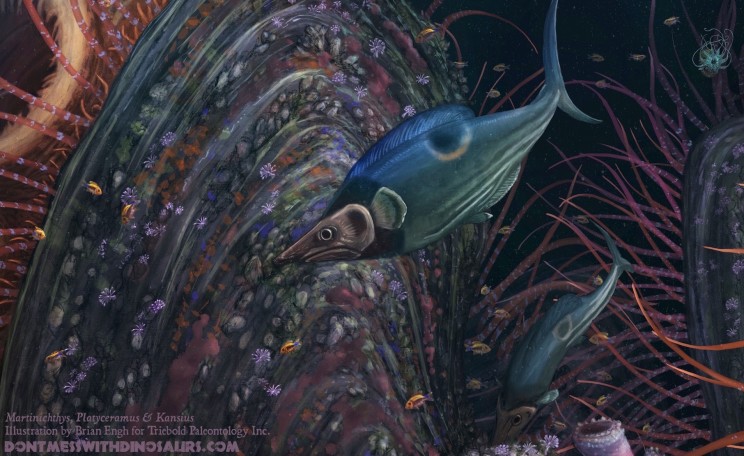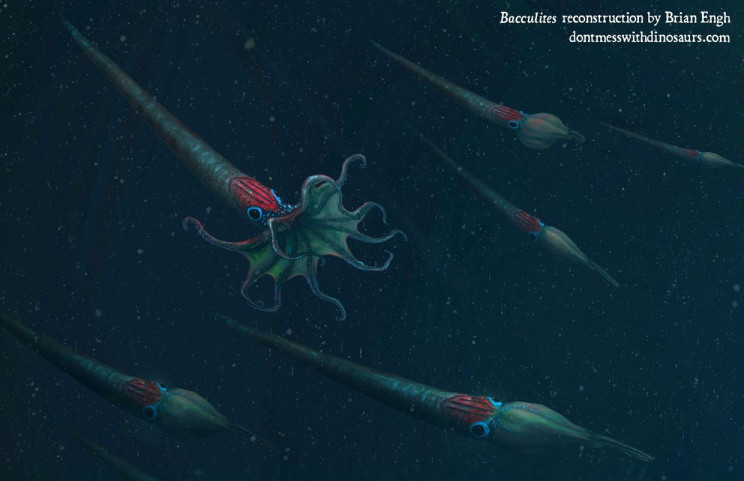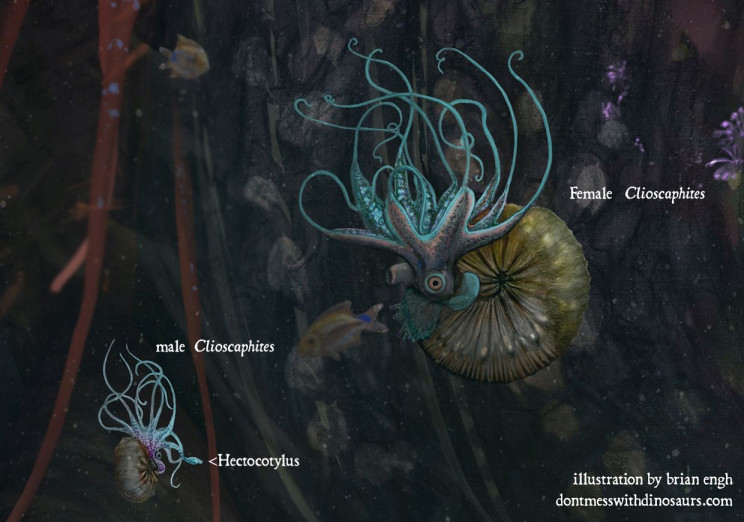From the depths of SAVAGE ANCIENT SEAS
I am excited to welcome you to the first natural history museum exhibit for which I created all of the art for the signage and displays: SAVAGE ANCIENT SEAS. This exhibit is a collaboration with Triebold Paleontology Inc., a company that specializes in the preparation and casting of rare fossils for museum display. I have had the pleasure of working closely with lead paleontologist at TPI Anthony Maltese as well as owner of the company Mike Triebold, to create the most detailed and comprehensive exhibit on the Western Interior Seaway ever created… And the the best part is it’s a traveling exhibit that will tour the country for years to come!!
The first stop is a museum in Overland Park Kansas (near Kansas City) called the Museum at Prairiefire. Stay tuned to their facebook page and twitter for updates!!
For this exhibit I created over 40 reconstructions of individual animals for signage around the exhibit, as well as information displays and 5 full color paleoecological reconstructions showing different parts of the WIS paleoenvironment and interesting behaviors indicated by the fossil record.
I plan on releasing some video content over on my youtube page in the coming weeks, so please subscribe there if you haven’t already, and stay tuned to my twitter and facebook page to see lots of new artwork.
I will be releasing final art work on my website here, and the first piece I want to show you is from the very bottom of the Western Interior Seaway: The Inoceramid Reef!
This dark and spooky scene is based on fossils found in the deep water offshore chalk deposits of the Western Interior Seaway. The main bio-structure of these deep water reefs was not corals as it is in modern deep water reefs, but rather bialves (clams/oysters) of all sizes, from giant Inoceramids such as Platyceramus that grew shells up to almost 3 meters accross (!!), all the way down to tiny oysters which encrusted these larger bivalves. Presumably a variety of sponges, cnidaria and other soft bodied organisms also colonized these structures, and intriguingly the encrustations of oysters are often on both sides of the larger inoceramid shells. This lead us to reconstruct the large bivalves standing up like modern giant clams, with a large foot rooting them into the soft chalky mud at the bottom. Also fascinating is the fact that these huge bivalves are often found with the tiny skeletons of little fish and eels INSIDE their shells (wowneat!).
One such fish, called Kansius, is depicted in my illustration swimming into and out of the enlarged siphon of the Platyceramus, suggesting that perhaps these two species had some kind of symbiotic relationship. Modern bivalves have evolved a variety of relationships with fish, both symbiotic and parasitic, so it seems quite possible something like that was going on between these associated fossil animals. Considering that bivalves are usually filter feeders, I’m inclined to speculate that perhaps by harboring a variety of life forms on the outside of the shell, and providing a space for small fish to hide within their siphons, these giant filter feeders were encouraging these little fish to feed on the outside of their shell, then deposit their nutritious fishy poops inside the shell where the giant bivalve’s filter organs and stomach are. I chose to depict the bivalves with elongated tentacles because some modern bivalves have these and because they look cool. In modern clams and scallops the tentacles are involved in feeding, and help to detect predators, which would come in handy for knowing when to close up the shell and protect your little Kansius poop farmers…
The big huge fish swimming above the reef is a Megalocoelacanthus – a huge 3 meter coelacanth known only from its big weird almost-beach-ball-sized skull (highly scientific measurement).
In addition to Megalocoelacanthus the other featured fish is a highly speculative reconstruction of a bizarre and enigmatic fish called Martinichthys. These things are super weird, and only known from their skulls, which have bizarre elongated noses that are worn off on the end, and reduced jaws with hundreds of tiny tooth sockets. You can check out a bunch of pictures of specimens on the Oceans of Kansas website. ?
The ONLY postcranial (non-skull) skeletal material known for Martinicthys is a few simple cylindrical vertebrae, so I had to reconstruct them based on species that are considered to be related, but this relationship is pretty tenuous as it is only based on similarity of their teeth. Teeth tend to be rapidly evolving and there is a ton of convergent evolution in the world of teeth, so we really have no clue what Martinicthys really looked like or what it was using it’s weird snubbed nose for. There is however one interesting clue: Martinichthys is only found in 1 layer of the Kansas Chalk, and at that layer there is a ton of coprolites (fossil poops) that are comprised entirely of smashed up bivalve shells… So based on Anthony’s suggestion I depicted Martinichthys booping it’s snoot into the small oysters encrusting the giant inoceramid to bust them up into eatable sized chunks. (but who knows. Nature, you crazy!)??
Aside from fishes and bivalves the illustration also features some of my most favourite invertebrates: ammonites. The two species featured are a scaphitid with a coiled shell called Clioscaphites, and Bacculites, a common strait-shelled taxa. Isotope analysis of the shells of these animals indicate they were both likely deep water species, and there is good direct evidence that Bacculites was a filter feeder. Some modern cephalopods are filter feeders as well, such as the bizarre Vampiroteuthis of the deep ocean anoxic zone, so I reconstructed Bacculites with tentacles and a webbed mantle similar to Vampiroteuthis.
Clioscaphites was also likely a filter feeder. For those that don’t know, ammonites had multiple air-filled chambers in their shells which they could flood with water to control buoyancy like a modern chambered nautilus. Based on the orientation that the shell would have floated at when it had air in its chambers it is thought that Clioscaphites would have floated around with the opening to its shell pointing strait up, perfect if your lifestyle is to bob around in the deep ocean and reach for the stars snaggling up little particles of marine “snow” (dead stuff falling down to the bottom). Many modern filter feeders use elongated sticky tentacles to collect food snack particles from the water, so I reconstructed Clioscaphites with this kind of filter feeding adaptation. Clioscaphites is also fun because there’s good evidence it was sexually dimorphic, with males only being about 2/3 the size of the females. So i included both – a big female and a smaller male with a modified tentacle called a hectocotylus which is basically an arm that functions as a penis in modern cephalopods. What’s extra fun and weird and sort of alarming is that in many modern cephalopods, such as some species of squid and octopuses they will detach their hectocotylus and either hand it to the female like “here have fun” or it will detach and swim toward her on it’s own (!!!!!!) like “DON’T WORRY BABY I’M ON MY WAY OVER!!” (yikes).
Stay tuned for more Savage Ancient Seas art over the next few weeks. All the art is done, and the exhibit opens in mid June, so I’ll start going public with a lot of this art to promote the exhibit opening. When you start seeing it up on twitter and facebook etc, I hope you’ll share it around. I’m super excited about everything we were able to accomplish with this exhibit (and all since February!!) and I am so grateful to all of you, especially my Patreon supporters, for following and supporting my work and offering thoughtful feedback.
